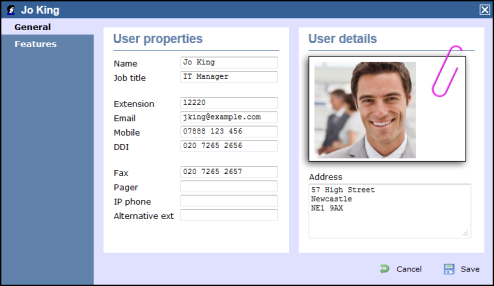TIM Enterprise's unique, object-based directory holds all your telecoms assets.
This ultra-versatile directory system allows you to faithfully recreate your organizational structure.
You can easily slot in newer online collaboration platforms such as Microsoft Teams, Zoom, etc. alongside your existing PBXs.
Users can be grouped into folders that reflect your sites, cost centres and divisions. Because your site may span the globe, TIM Enterprise allows you to apply any tariff or currency at any point in your directory.
Virtual groups can also be created. These virtual are groups created for reporting purposes only. Any user can belong to several virtual groups.
Create an on-line employee directory, where users can access the system using a standard web browser. Instantly see users' email addresses, office location, mobile and extension numbers. You can even attach photo ID!

By positioning people at various points in your hierarchy, only those users with appropriate authority can access this information. Similarly, when running call reports, the scope of the report is defined by simply selecting an entity from the directory; all objects beneath this point in the hierarchy will be included in the report.
What's more, the system allows for a special type of container, known as reporting collections, whereby disparate users - even disparate groups of users - from anywhere in your organization, can be grouped into a single, easily-selectable container.

As an example, you may want to compare the performance of your Aberdeen, Manchester and Newcastle Sales teams. With each of these teams already existing in your directory, simply take a copy of each Sales team, from anywhere, and paste each of them into a new reporting collection called UK Northern Sales Group.
So now, when running a report, creating a statistics collection point, or any other operation involving the selection of an entity from the directory, simply choose your new UK Northern Sales Group reporting collection!
And the directory isn't just for storing your people details. It's where all of the system's features are rooted - their placement determines exactly how they behave or who they affect.